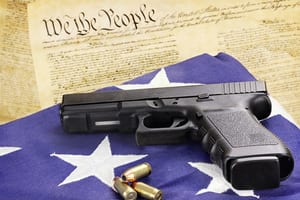
How Do Florida’s “Red Flag Laws” Identify Dangerous Gun Owners?
Whether you’re for the enforcement of current gun laws or are in the camp that hopes to see new and more effective restrictions, it’s no secret that the United States is known around the world for having a problem with gun violence. Almost all 50 states have experienced at least one tragic massacre, and two massacres in recent history have shaken communities in the Sunshine State. The shooting at Pulse nightclub in Orlando 2016 became the nation’s deadliest mass shooting by a single shooter until the Route 91 Harvest music festival shooting happened in Las Vegas just a year and three months later.
Then, Parkland happened. The shooting at Stoneman Douglas High School in February 2018 claimed 17 lives and injured 17 others in one of the state’s safest communities. By the time of the shooting, people had had enough. Authorities, school administrators, family members, and others knew that the shooter had posed threats months — and arguably, years — before the shooting took place, but weak disciplinary policies allowed the shooter to continue slipping through the cracks. Eventually, he was suspended from the school but went back to fulfill his desire to commit mass murder.
After the Parkland shooting, many states adopted extreme risk protection orders or red flag laws. These laws aim to prevent people who are believed to be a threat to themselves or others from getting their hands on their guns or other weapons. In Florida, the law allows a police agency to request a temporary risk protection order from a judge against the person believed to be dangerous. Other states allow family members to submit a petition for a firearm to be removed. Eventually, there’s a hearing during which a judge may decide whether to ban the individual from access to guns for up to one year.
People from both sides of the political aisle have supported red flag laws in response to deadly mass shootings. But, how do these laws help police identify potentially dangerous gun owners?
How Are Police Using Red Flag Laws in Florida?
Red flag laws allow police officers to take simple measures to protect communities from potential offenders. First, an officer must identify a person who might be a threat to themselves or others. The typical warning signs may include:
- Erratic behavior
- Expression of their intent to hurt themselves or others
- People who have been admitted through the Baker Act for mental health treatment
- People who have committed crimes
- People who make threats
Once a person has been identified as potentially dangerous, the police department may petition for an extreme risk protection order to temporarily remove their weapons. Afterward, a judge holds a hearing within 24 hours with the officers who swear to the allegations.
If the judge approves the temporary risk protection order, the judge orders a search of the respondent’s home to secure firearms or ammunition. The respondent does not have to give up their guns and weapons to police; they can leave them with a friend or family member.
In Florida, this temporary order may keep a person away from their guns for 2 weeks. After this period, there’s a final hearing to determine whether to extend the risk protection order. At this hearing, the respondent is permitted to provide a defense if he or she wishes to fight to keep their weapons, however, they’re not entitled to a court-appointed lawyer because risk protection orders are civil matters.
Are Red Flag Laws Effective?
According to a 2018 poll, 85% of voters support red flag laws. In a study by Everytown for Gun Safety, a group that advocates reducing gun violence, about half of mass shooters showed warning signs. Additionally, a study printed in Psychiatric Services found that, in 2018, gun suicides fell significantly in Indiana and Connecticut after the passage of extreme risk protection laws.
There’s no concrete study available, however, on the effects of red flag laws to curb mass shootings due to the Dickey Amendment — a law that prevents studying gun violence. The Dickey Amendment required that “none of the funds made available for injury prevention and control at the Centers for Disease Control and Prevention (CDC) may be used to advocate or promote gun control.”
What to Do if Your Gun Rights Are Threatened in Orlando
While red flag laws have the best intentions, mistakes do happen. If you’ve been unfairly targeted for mental health treatment and the removal of your guns, you have the right to work with a lawyer who will advocate for you in court. Although extreme risk protection orders are civil matters, the outcome of your hearing can be greatly improved with a lawyer to represent you.
In the Orlando area, attorneys with The Umansky Law Firm have advocated for people whose gun rights were threatened by the court for many years. Our lawyers have more than 100 years of combined experience providing thoughtful criminal defense for clients in Central Florida. Our firm is highly rated on Avvo.com, and our attorneys are among Florida’s Legal Elite and Super Lawyers in the state of Florida. To schedule a free consultation, call our office or contact us online today.
Resources:
https://everytownresearch.org/extreme-risk-laws-save-lives/
https://ps.psychiatryonline.org/doi/10.1176/appi.ps.201700250


